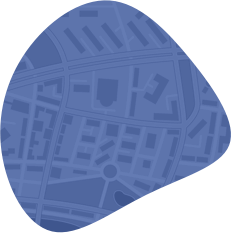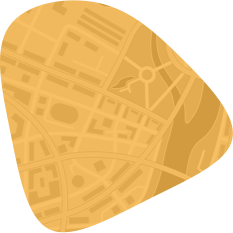What are Common Non-Surgical Back and Spinal Cord Injury Medical Procedures?
Our experienced NYC orthopedic back surgeons explain your options
Our New York orthopedic back surgeons at Island Musculoskeletal Care (IMC Bone Doc) are familiar with many of the non-surgical procedures for back and spine injuries. That’s because our board-certified, fellowship-trained doctors have more than 100 years of combined medical experience dealing with a wide range of back and spinal cord injury medical procedures.
All our training has taught us a very important lesson – never take anything for granted. That’s why we want to meet with you and examine you right away. That way, our doctors can diagnose exactly what’s wrong and explain whether non-surgical treatments may be right for your back or spinal cord injury. To better diagnose you, each one of our seven New York locations has the latest, state-of-the-art diagnostic equipment, including an MRI machine in each office.
Don’t delay. Schedule a doctor’s appointment today at IMC Bone Doc. Many of our physicians have immediate appointments available, sometimes even the same day. Whenever possible, we will do our best to provide all your medical care at one convenient location.
Types of non-surgical procedures available for back or spinal cord injuries
Non-surgical procedures for back or spinal cord injuries cover a wide range. Some of the most common – and most effective – non-surgical treatments for spinal cord injuries and back injuries include:
- What are epidural steroid injections?
- What is a radiofrequency ablation?
- What are medial branch block injections?
- What are lumbar spinal injections?
- What is a thoracic spinal injection?
- What is a facet injection?
- What is a sacroiliac joint injection?
- What is lumbar spinal bracing?
- What is cervical/lumbar traction?
- What is a piriformis muscle injection?
These are just some of the most common, non-surgical medical procedures for back or spinal cord injuries. There are many other treatments available, including prescribing pain medications for back pain. Our doctors have extensive pain management experience and can work with you to develop a strategy designed to address your back pain.
If you need physical therapy, each one of our seven New York offices has a licensed physical therapist on staff. These highly skilled physiatrists can teach you different exercises and supervise your rehab, using the latest, rehabilitation equipment located in each office.
Learn more about non-surgical procedures for back pain or spinal cord injuries
We realize that every back and spinal cord injury is unique. That’s why our doctors want to meet with you and create a treatment plan specifically designed for you based on your symptoms and unique, physical needs.
Get the help you need to get your life back on track. Contact us and schedule an appointment right away. You can make an appointment online or call us. Our medical practice is in-network and accepts most forms of insurance. We also have extensive experience working with insurance companies that handle on-the-job injuries covered by workers’ compensation insurance.
IMC Bone Doc – the New York orthopedic back surgeons you want when it matters most.
What are epidural steroid injections?
One of the most common and effective treatments for back pain is epidural steroid injections. Our doctors have extensive experience administering epidural spinal injections, which can help relieve back pain associated with herniated discs, spinal stenosis and other painful spinal cord injuries.
What is a radiofrequency ablation?
Also sometimes called rhizotomyorneurotomy, radiofrequency ablation (RFA) is a revolutionary pain relief procedure in which radio frequency waves are used to create heat applied to damaged nerves. RFA treatments are often used to alleviate chronic lower back pain and neck pain, as well.
What are medial branch block injections?
This minimally invasive procedure involves injecting a local anesthetic into small nerves in the back known as medial branch nerves, which transmits pain signals from the back to the brain. Medical branch block injections block these messages from being transmitted to the brain, resulting in temporary pain relief. Back surgeons often perform this procedure in order to better diagnose the source of back pain.
What are lumbar spinal injections?
Pain-relief injections inserted into the lower part of the spine can be an effective way to relieve lower back pain, as well as pain in the lumbar facet joints, hip, buttocks and legs. Lumbar spine injections are also a common treatment for arthritis of the lower spine and back.
What is a thoracic spinal injection?
These pain relief injections focus on relieving pain in the central part of the spine, which is known as the thoracic region of the spine. The thoracic region includes 12 vertebrae (T1-T-12) in the spine and protects many vital organs located in the chest.
The four, small joints located in the lower and upper part of each vertebra are known as facet joints. Facet injections are often administered in order to determine if a patient’s back pain is coming from the facet joints. Spinal arthritis is a common cause of back pain in the facet joints.
What is a sacroiliac joint injection?
Sacroiliac (SI) joints are located in the lower back where the ilium (upper part of the hip bone) and sacrum (lower part of the spine) bones meet. Sacroiliac joint injections often serve two purposes. These injections can be used to diagnose where the pain is originating in the back. Sacroiliac joint injections can also simply be used to relieve lower back pain.
What is lumbar spinal bracing?
Back braces are a common method for keeping the back in place after a back injury or back operation. Lumbar spinal braces help hold the lower, lumbar part of the back in place. In general, there are two, main types of lumbar braces – a soft lumbar corset and rigid lumbar braces. Our orthopedic back surgeons can discuss whether either types of braces are right for you.
What is cervical/lumbar traction?
This non-surgical procedure often helps relieve excess pressure on the spine and compressed nerves by stretching the spine through the use of traction. Lumbar traction increases the spaces between the lumbar vertebrae in order to relieve lower back pain. Roughly 15 to 30 lumbar, lower back spine traction treatments are normally performed during a 4- to 6-week period. Such medical treatments are common for herniated discs and misaligned spines.
What is a piriformis muscle injection?
Located in the buttocks, the piriformis muscle connects the hip with the bone located in the lower part of the spine, which is known as the sacrum. Piriformis muscle injections help reduce pain found in this part of the body. Often, piriformis muscle pain results in muscle spasms and pain focused on the sciatic nerve, the long nerve which runs from the lower back to the feet through the legs and buttocks. Sciatic nerve pain is known as sciatica and can be chronic, especially among older adults.






















